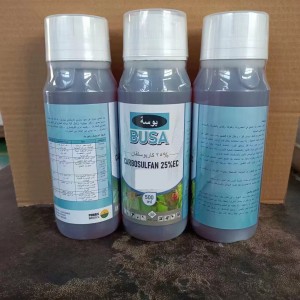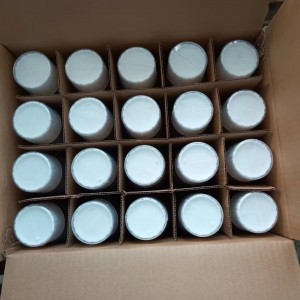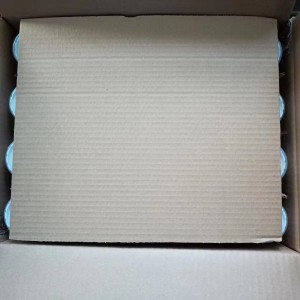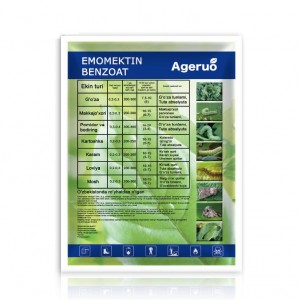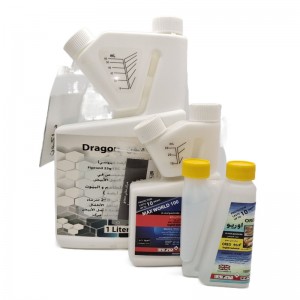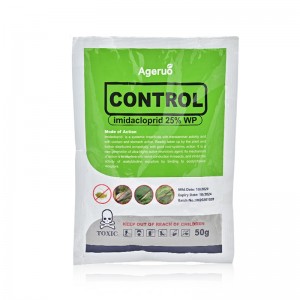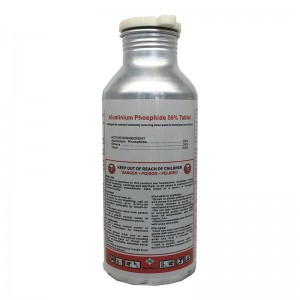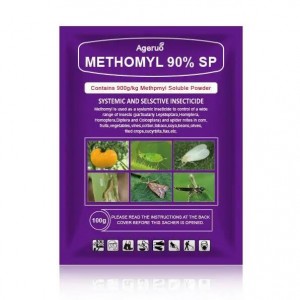Products
Carbosulfan 25% EC | IRAC 1A Carbamate Insecticide
Introduction
| Product | Carbosulfan 25% EC |
| IRAC / MoA | IRAC 1A carbamate; acetylcholinesterase inhibitor |
| Action Profile | Contact + stomach action; rapid knockdown at pressure onset |
| Target Complexes | Sucking pests (aphids, leaf/planthoppers, thrips); selected chewing/boring pests where labeled |
| Crop Examples | Citrus & other fruit, vegetables, cotton, rice & cereals, maize, sugarcane (label-dependent) |
| Use Position | Early windows within registered timings; rotate with non-1A partners |
| Formulation | EC — fast emulsification; stable re-dispersion; handling robustness |
| Quality Window | Appearance/emulsifiability/stability within release ranges; cold/heat storage: pass |
| Compliance | Licensed buyers; follow the registered product label and local regulations |
| Documentation | COA / SDS / TDS / label elements |
| OEM & Traceability | Multilingual artwork; batch/QR; optional anti-counterfeit; pallet map & photo pack |
Target Pests & Crop Fit
Sucking Pests (Primary Use Cases)
Carbosulfan 25% EC delivers fast contact + stomach action against aphids, leafhoppers/planthoppers, and thrips on labeled crops, helping protect early foliage and reproductive tissues at pressure onset.
Chewing & Boring Pests (Selected Labels)
Where permitted by the registered label, activity extends to fruit/stem/cane borers and select chewing larvae—best positioned against newly emerged stages within an IPM rotation.
Crop Examples (Confirm Local Registration)
Typical labeled systems include citrus & other fruit, vegetables, cotton, rice & cereals, maize, and sugarcane. Scope, timings, and targets are label-governed and may vary by market.
Boundary & Exclusions
Not intended for mites, nematodes, or unlisted pests/crops/sites; do not extrapolate to advanced instars or heavy, established infestations. Always align with the registered product label.
Positioning & Rotation (Principle-Level)
Use at pressure onset within label timings, then rotate with non-1A modes and integrate scouting thresholds, sanitation, and other IPM tools. (Operational directions are not provided on this page.)
Crop–Pest Fit Matrix (principle-level, non-operational)
| Crop group (examples) | Primary target complexes (examples) | Positioning note |
|---|---|---|
| Citrus & other fruits | Aphids; selected fruit borers (label-dependent) | Early pressure; rotate away from 1A |
| Vegetables | Aphids, thrips; selected caterpillars (label-dependent) | Onset use; pair with IPM thresholds |
| Rice & cereals | Leafhoppers/planthoppers; early larvae (where labeled) | Follow label timings; manage resistance |
| Cotton | Aphids, thrips; select borers (label-dependent) | Program rotation with non-1A partners |
| Maize & sugarcane | Early borers/chewers (where labeled) | Principle-level only; confirm label specifics |
Non-operational content—no rates, mixes, or stepwise directions. Supply is restricted to licensed buyers; all use must follow the registered product label and local regulations.

Mode of Action
It has strong lethality and quick effect, and has stomach poisoning and contact effects. Its toxicity mechanism is to inhibit the activity of insect acetylcholinease (Ache) and carboxylesterase, causing the accumulation of acetylcholine (Ach) and carboxylic acid esters, affecting the normal nerve conduction of insects and causing death.
Suitable crops: Carbosulfan can prevent and control pests of various economic crops such as citrus and other fruits and vegetables, corn, cotton, rice, sugar cane, etc.
Act on the following pests: The control effect on aphids is particularly excellent. Such as: citrus rust ticks, aphids, leafminers, scale insects, cotton aphids, cotton bollworms, cotton leafhoppers, fruit tree aphids, vegetable aphids, thrips, sugarcane borers, corn aphids, stink bugs, tea tree aphids, small Green leafhoppers, rice thrips, borers, leafhoppers, planthoppers, wheat aphids, etc.
Use & Agronomic
Production Systems
Fits labeled use in row crops, fruit crops/orchards, and vegetables across open-field and, where permitted, protected cultivation. Scope and any greenhouse/nursery permissions are defined by the registered label; do not extrapolate across systems.
Trigger Conditions for Deployment
Position Carbosulfan 25% EC at pressure onset when monitoring indicates rising populations of sucking pests (aphids, leaf/planthoppers, thrips) or, where labeled, newly emerged chewing/boring larvae. Typical triggers include warm surges, edge hotspots, volunteer/alternate hosts near fields, and early vegetative stages where vigor protection has the highest ROI.
Crop Phenology & Risk Moments
Greatest principle-level value occurs during early vegetative growth and pre-reproductive windows on labeled crops—periods when pest feeding can cascade into stand loss, curling, honeydew/sooty mold, or vector pressure. Exact timings and intervals remain label-governed and may differ by market and crop.
Environment & Stewardship Notes
Adhere to drift minimization practices, local buffer/sensitive-area rules, and worker protection statements as listed on the label/SDS. Follow any pollinator or beneficial-insect precautions applicable to your jurisdiction. This page is non-operational—no rates, mixes, or stepwise directions.
Program Positioning
Carbosulfan 25% EC is positioned for early-pressure knockdown on labeled crops, then transitioned into a season program built on mode-of-action rotation. Use within label-approved timings to reduce baseline pest load, and alternate with non-IRAC 1A partners to diversify selection pressure. Integrate with IPM: monitoring and thresholds, sanitation, edge hotspot control, and crop vigor management. This content is non-operational—no field rates, tank mixes, or stepwise directions are provided; always follow the registered product label and local regulations.
Formulation & Quality Window
The EC platform is engineered for fast emulsification, stable re-dispersion, and handling robustness across transport and storage. Range-based QC fields include: appearance (uniform), emulsifiability/re-emulsifiability (pass), pH/viscosity within validated release windows, foam control for smooth preparation, and cold/heat storage: pass under validated protocols. Consistency is governed via raw-material ID, controlled dispersion, in-process QC at critical points, and COA-based lot release. Retention samples are archived for traceability; sensitive formulation parameters remain undisclosed.
Safety, Storage & Compliance
As an AChE-inhibiting carbamate (IRAC 1A), Carbosulfan 25% EC requires trained operators, appropriate PPE, and adherence to SDS/label precautions. Market availability, permitted crops/sites/targets, and any regional restrictions are jurisdiction-specific. Store sealed in original containers in a cool, dry, well-ventilated place away from food/feed and incompatibles; include SDS and lane-required documents during transport. This page is non-operational; supply is restricted to licensed buyers and all use must follow the registered label.
Packaging & OEM
Pack sizes: 500 mL / 1 L (professional/retail); 5 L / 20 L (program/bulk). Materials: HDPE/PET with tamper-evident closures. Artwork & languages: multilingual private-label options with aligned claims/legal elements. Traceability: batch ID and QR, optional anti-counterfeit (serialization/hologram). Logistics kit: pallet patterns (20GP/40HQ), packing list, SDS routing, and a shipment photo pack (filling/coding/cartoning/palletization) for intake QA.
Evidence & Assurance
Each lot ships with COA / SDS / TDS / label elements. Stability: cold/heat storage verification passed within the labeled shelf-life. Change control governs raw-material or packaging substitutions. Retention samples enable downstream auditing. Third-party summaries or registration excerpts can be provided under NDA; no sensitive formulation parameters are disclosed.
FAQ
What is the mode of action of Carbosulfan 25% EC?
It is an IRAC 1A carbamate that inhibits acetylcholinesterase, disrupting nerve transmission in susceptible insects.
Does it control both sucking and chewing pests?
Yes, within label scope—primary fit is sucking pests; selected chewing/boring pests are included where explicitly listed on the registered label.
Why rotate away from IRAC 1A after initial use?
To mitigate resistance risk and meet stewardship policies; alternate with non-1A modes and embed IPM practices.
Is it allowed in every market and crop?
No. Availability and scope are jurisdiction-specific; confirm your local registration for crops, targets, timings, and any restrictions.
What documentation is supplied with each lot?
COA, SDS, TDS, label elements as standard; private-label artwork, traceability, and anti-counterfeit options are available.
Get a Quote
Tell us your markets, crops/sites, annual volumes, pack sizes, label languages, and documentation needs. We will return an audit-ready proposal with artwork checkpoints, a pallet plan, and a delivery window. (No field rates, tank mixes, or stepwise directions provided on this page.)


